Many people have probably been feeling that the word “DX (Digital Transformation)” has been becoming outworn and outdated in the past few years. However, faced by the COVID-19 crisis since last year, DX has suddenly attracted attention and has advanced significantly at companies, triggered by the promotion of telework by the government.
Masayuki Chatani and Tim Denley at KPMG Ignition Tokyo (KIT) and Makoto Sado, Partner at KPMG Consulting, envisioned and fantasized what DX means to companies and how it will change corporate activities in the post-COVID-19 society, while sorting out the current situation.
Contents
- Why Do We Promote DX? Why Should We Implement Innovation?
- Three Functions that Exhibit Strength in This Age of Uncertainty
- The Value of a Company Will Be Measured by “Talent, Data and Technology”
- Can Executives “Exercise Patience until the Company Turns to an Upward Trend?”
- Whether to “Operate” or “Manage” a Company? Founding DNA Will Rescue Companies
- How Do We Create Value in an Age that Has No Formulaic Answer?
Why Do We Promote DX? Why Should We Implement Innovation?

(Makoto Sado, Partner of KPMG Consulting (left), Masayuki Chatani, Representative Director & CEO of KPMG Ignition Tokyo and CDO of KPMG Japan (upper right), Tim Denley, Board Member & Partner of KPMG Ignition Tokyo (lower right)) *Professional affiliation and official position in the article are at the time of publication.
Chatani: First of all, please tell us how DX is being viewed at KPMG Consulting.
Sado: DX is a theme that is being discussed in more detail at KPMG Consulting. To explain the process in sequence, the word “DX” started to be used for the first time in our previous three-year plan. Looking back, I feel that it was still being used previously without that actual form. For instance, emphasis was placed on the digitalization of operations and corporate divisions as well as customer processes. It was specific but tended to be sectional.
However, we gradually realized that “this is not what DX actually is” and a standard for “what DX is” finally started to take form within us.
Now, our view on DX has changed to “we must seize the impact of digital technology, not as an extension of the past, but as something that changes the business model of the company itself, the way to generate revenues and the overall operating model.” We have also started to think about how we can create value and structure human resources to respond to these changes. The new mid-term business plan, which we are currently considering, is indeed based on this idea.
Chatani: I see. At KIT, we have been devising the idea that “DX is CX (Corporate Transformation).” This refers to initiatives to change and evolve the concept and positioning of the entire company including “non-digital areas” rather than just replacing analogue with digital. I’m delighted to find out that our way of thinking resonates with that of KPMG Consulting.
Denley: I have been confronting DX with Sado-san for four years. This is because there was a concern that the impact of DX could not be generated unless we implemented it as an organization.
By the way, in relation to DX, it was a mainstream idea a while ago that “to create disruptive innovation, you have to make the people who are responsible for it independent of the company.” However, I have started to think that “this is not so” recently. This is because I feel that there is no time to spare for the process of becoming independent in the present age when the speed of change is faster than before.
Sado: That’s true. The stance to think instead “why do we need to implement DX?” and “why do we need to promote innovation?” is important and so I believe that some kind of hypothesis must be formulated to do so.
It can be said that the premise itself of the business model, which had been taken for granted in the last half century, has been given an opportunity to change for the first time. Conventional consulting had been conducted based on the premise that the core of the business itself would remain the same even if the approach and model might change. However, from now on it will be necessary to change the business model itself, and we will have to provide consulting services based on the premise that the business model will change.
Both the executives and we, the consultants, must confront DX with this understanding. We must thoroughly understand the essence of the question “why do we need to implement DX and innovation?”
Some of you may think that “various things have already changed in the past,” but I think that scale and productivity have been polished without shaking the foundations of industry rules and business models in the last half century. Nevertheless, we are in an age where we cannot confront DX unless we completely rework the business model itself and the operating model of the entire organization, as can be seen at GAFA, which are the leading companies in the present age. I think this is the essence of “Why DX?”
Three Functions that Exhibit Strength in This Age of Uncertainty
Chatani: It is definitely true that businesses and operating models are changing, and answers cannot be found in text books or precedents on how to respond to these changes. This in itself is what is substantially different from before, but what kind of human resources and abilities do you think will be necessary in this phase?
Sado: What we are considering now are three abilities. The first is the ability to see the future of the industry, which would be future-oriented industry foresight. The second is digital enablers (having knowledge about digital forces and technologies and the ability to flexibly source and knit them together from internal and external sources.) The third is the ability to sublimate data to business value. It is data that create sustainable value in digital transformation. It is the ability to think about how to utilize the data and make recommendations.
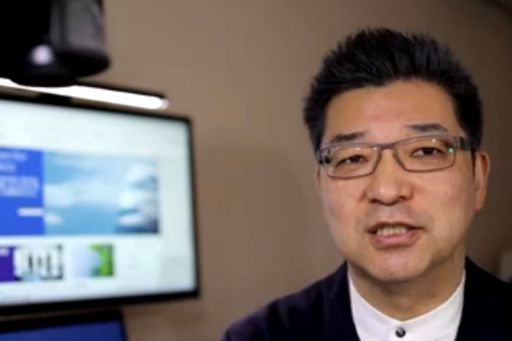
I think that if KPMG Japan can acquire these three abilities and strengthen them, we will be able to advance strongly in this age of uncertainty and provide value in the ages to come when we have to confront DX.
Denley: Listening to what you just said, I remembered the Data Analytic Team in the U.S.
During the Obama Administration, financial regulations called the “Volcker Rules” were proposed by former Federal Reserve Chairman Paul Volcker. When these rules were enforced, all financial institutions were required to grasp all their products and transaction details and clarify what parts would conflict with the Volcker Rules in a short period of time.
As there are quite a large number of financial products and the documents that describe the details are enormous, it was said that it would take at least four years to understand everything. So, I heard that KPMG gathered together people who already understood the products, formed a team with people who were conversant with AI, and eventually managed to solve the problem in only two weeks.
This indeed can be considered the outcome of utilizing the three abilities that Sado-san mentioned. In this way, I think that “hyper-agility,” which can respond in about two weeks to what normally takes four years or at least two to three years, is required in today’s businesses.
Sado: In conventional consulting, we were able to pursue matters based on case examples, best practices and advanced cases of other companies but now, we are groping our way forward by projecting an uncertain future. Our stance has also changed considerably and I feel that stronger cooperation beyond any language with our clients will be necessary in addition to the aforementioned three abilities.
I also feel that we must think about what kind of risks we should take ourselves going forward. It is not enough to just say “we will stay close to customers.” We must demonstrate what kind of risks we are going to take specifically, or else, we will not be able to keep up with the times.
The Value of a Company Will Be Measured by “Talent, Data and Technology”
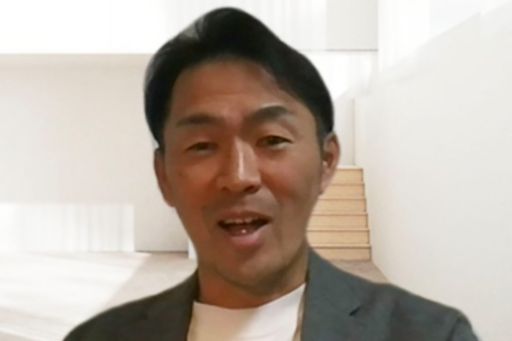
Chatani: The view that “capitalism has ended” in a way has been emerging for some time. As you well know, there are only a few different investment destinations and there is an excessive money supply (of investment funds) in today’s marketplace. Meanwhile, I am envisioning that the method of measuring corporate value will change from the conventional “people, goods and money” to three elements, namely, “talent (ability and skill), data and technology.”
This is because all kinds of economic activities are becoming digital-centric on a full scale. This is a trend where the type of talent that is required will change and at the same time data and technology for that talent to survive will become very important. Sado-san, how do you think the level of data used by companies will change?
Sado: First of all, as digital and management cannot be separated anymore, we are in an age where we must enhance our sensitivity to digital impact if we are involved in management. Also, the whole concept of digital usage is certainly changing and the importance of talent is also increasing. However, when it comes to the discussion of “how do we utilize data?,” I think we are falling far behind.
Let’s say that the lifetime employment system comes to an end and the idea of working for a company will change to individuals signing contracts directly with companies. Then, I think the company will shift to data-driven management where personnel are allocated based on micro-targeting of whether each talent will coincide with the functions required by the company. What becomes an issue here is the corporate concept of talent. For instance, a traditional way of thinking, such as “trying to find someone within the company” will not be able to keep up with the speed of the times. What is important, I think, is the flexibility of the organization to flexibly procure necessary digital talents from within and outside the company and restructure the organization in order to develop added value required in the digital age.
Denley: I think that companies that are technology-oriented tend to be unconcerned about making money when they promote business. Though there seem to be various factors, they probably understand the model that they will not be in financial difficulty as long as they have “talent, data and technology.”
About 10 years ago, the mindset of owners began to change to “pay money for good things.” This is why it is becoming natural to think customer-first and “talent, data and technology” are emphasized.
The issue here is how legacy companies will confront these changes. It is on these occasions that companies like us must support them.
Can Executives “Exercise Patience until the Company Turns to an Upward Trend?”
Chatani: We often see long-established companies being disrupted by emerging companies nowadays. I guess this is due to the difference between “linear and exponential thinking.”
Though we must of course shift to an exponential way of thinking, which is a rule of the digital world, when we try to draw a graph of exponential ideas, it has the characteristic of advancing very slowly then suddenly soaring upward at one point. Linear ideas show strong growth during the stagnant period, and if we are used to this, we may feel anxiety in the growth process of exponential ideas. So, executives will be tested regarding whether they can exercise patience until the curve soars upward.
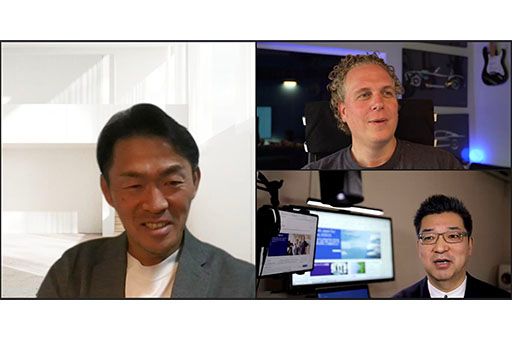
Sado: An exponential way of thinking is definitely important when creating innovation within or outside the company or when establishing new businesses. In addition, it is also essential to understand the differences in decision-making mechanisms between different business models.
Whether the same owner should continue to take ownership as before must be considered carefully, I think. This is because both the uncertainty and speed of decision-making are completely different from the business we have been steeped in. It is important to realize that if we ignore this fundamental difference and misjudge the decision-making system, we will not be able to create innovation.
Chatani: There are definitely many cases where decision-making by people with the same style of thinking will remain unchanged.
There is a very interesting case concerning top-class music labels. I heard that they do not necessarily understand all the music they handle but entrust someone with “connoisseurship” when discovering up-and-coming artists. Though I cannot say this with certainty as this connoisseurship involves past successful achievements, I assume that sensibility and sensitivity toward something great, which cannot be explained with logic, is required of executives.
Denley: I often discuss the question “are we a company that creates legacy or a company that protects it?” I felt this was highly relevant to what Chatani-san said.
Whether to “Operate” or “Manage” a Company? Founding DNA Will Rescue Companies
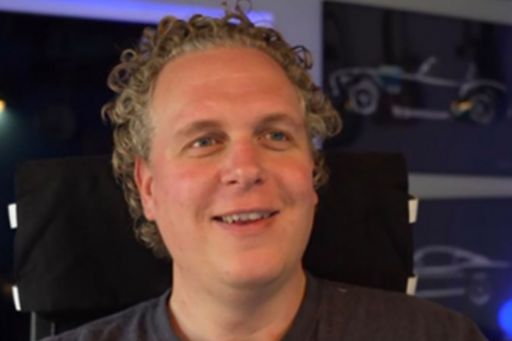
Chatani: As a high level of internal control is required nowadays, it may be the case that each business has too strong an influence on the way things are done. However, in Japanese companies, there used to be “lovable” veteran employees who could take a good idea that came up at the worksite to the division manager without any appointment just because they were “a classmate or contemporary of the division manager.”
In a sense, these employees were “playing the role of a pollinator of business” and were turning their ideas into business. People at the worksite tend to hide ongoing projects because “they are not completed yet.” However, there were people who used to connect people transversally by saying “this project is interesting so let’s combine it with that project” or “this initiative will probably produce better results if it is handled there.” Companies with such a corporate culture, I feel, are strong.
Sado: I felt that the culture of the company’s founding has created and utilized such “pollinators.” I guess the DNA from the time of foundation still remains and is inherited.
The age of zero or one transformation is clearly different from the past, when scale was created through management control. Especially because we are in an age of the need for the visionary, I think we are often doomed if there is no stronghold we can fall back on.
Chatani: A company isn’t something to be managed and run, it’s something to run.
Sado: The spirit of foundation can also be felt from Toyota Motors recently. It may be because Akio Toyoda is from the founding family and has inherited the DNA of Toyota but I’m sure it’s not just that.
Mr. Toyota talks about the future, saying, “we will change into a mobility company” but I think there is a visionary aspect of “wanting to contribute to society” somewhere in the foundation spirit. Putting this in today’s words, it can be easily linked with SDGs.
In the digital age, in other words, in the age when business models and industry rules are changing fundamentally, everyone is worried about the uncertain future. This is why I think it is the duty of executives to “present the future” instead of “managing the company.”
Denley: That’s “Hyper Purpose.” When I was young, I once worked with Microsoft when Bill Gates was still at the work front and I think the idea “that the power of computers will make our lives better” was deeply ingrained in all the workplaces. This is why this idea is reflected in the behavior of the company and employees.
This spirit should be the KPI of the company and I feel that GAFA are skillfully utilizing OKR (Objectives and Key Results) to make people widely aware of their founding spirit.
How Do We Create Value in an Age that Has No Formulaic Answer?
Chatani: We covered many topics in this discussion but they all make us sense the age of VUCA (Volatility, Uncertainty, Complexity and Ambiguity.) For us to promote business promptly and flexibly against this backdrop, I have come to think that the concept of Chinese restaurants to “cut ingredients for the time being so that anything from stir-fried rice to chuka-don can be cooked when an order comes in” is one solution. What do you think, Sado-san?
Sado: At KPMG Consulting, we intend to advance forward so that we can provide value as the brain of a company, from planning to execution, for transformations that embed the three abilities I mentioned earlier, rather than being asked “to support the digitalization of just one area of operations.”
In order to do this, we must imagine what technologies we can combine and what values we can draw up at the time. I think the stance to act from our side before clients or the market give us orders is also important. I think this is something that KPMG Consulting and KIT can work on together.
Chatani: That sounds exciting. Let’s change what was thought to be “impossible” to “possible” by leveraging values and methodologies that are different from before.
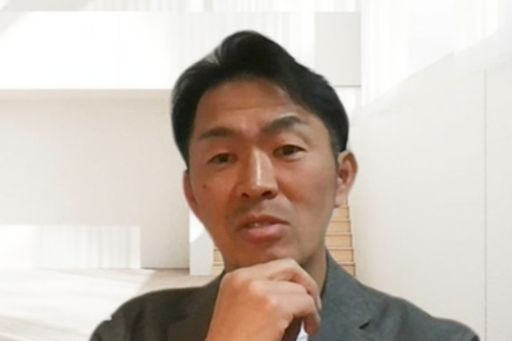
Follow us on KPMG Ignition Tokyo LinkedIn for the latest news.
Connect with us
- Find office locations kpmg.findOfficeLocations
- kpmg.emailUs
- Social media @ KPMG kpmg.socialMedia




